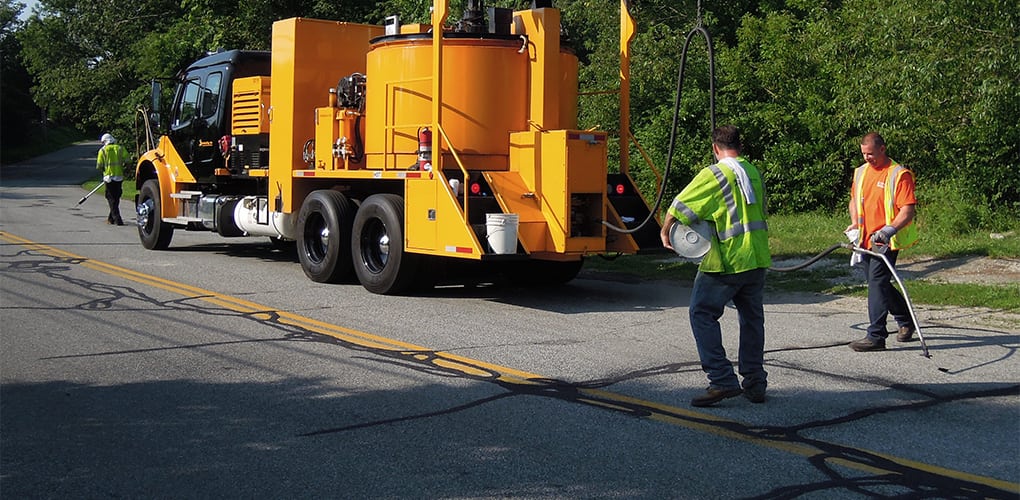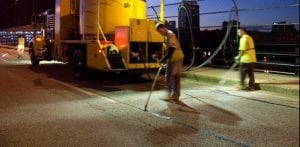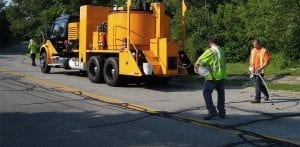Product Description
Crack Sealing is used to keep excess water or moisture from penetrating asphalt and to prevent further cracking, base failures and the overall deterioration of roadway. Methods include Routed Reservoirs, Blow and Seal Application, and Saw and Seal Application (new roads).
The process uses compressed air and a high-pressure blow pipe to remove dirt, debris, and water from existing cracks. A kettle heats the crack sealing compound, which is then delivered to the pavement surface through a pressure hose line and applicator shoe. The shoe width and sealer overbanding area are two to four inches wide. When traffic requires immediate use of the roadway, a boiler slag aggregate may be broadcast over the crack seal compound to prevent sealer pickup.
RSR Ranges
75-95
Product Materials
Emulsion, Rubberized Asphalt Cement, Asphalt Cement with Fibers, Polymer and Crumb Rubber Modified Asphalt Cement with Fibers
Life Expectancy
2-5 Years
Ideal Candidate
Crack Seal should be placed over sound structural pavement with a good profile. The pavement may be exhibiting minor to moderate cracking, bleeding, raveling, and oxidation. Crack seal should also be applied prior to the application of overlays (Microsurfacing, Chip Seal, HMA).
Surface Preparation
Cracks should be clear of dirt, debris, grass and water prior to the application of the crack seal compound.
For more information on this treatment, email us at PavementTreatments@BETA-Inc.com.




